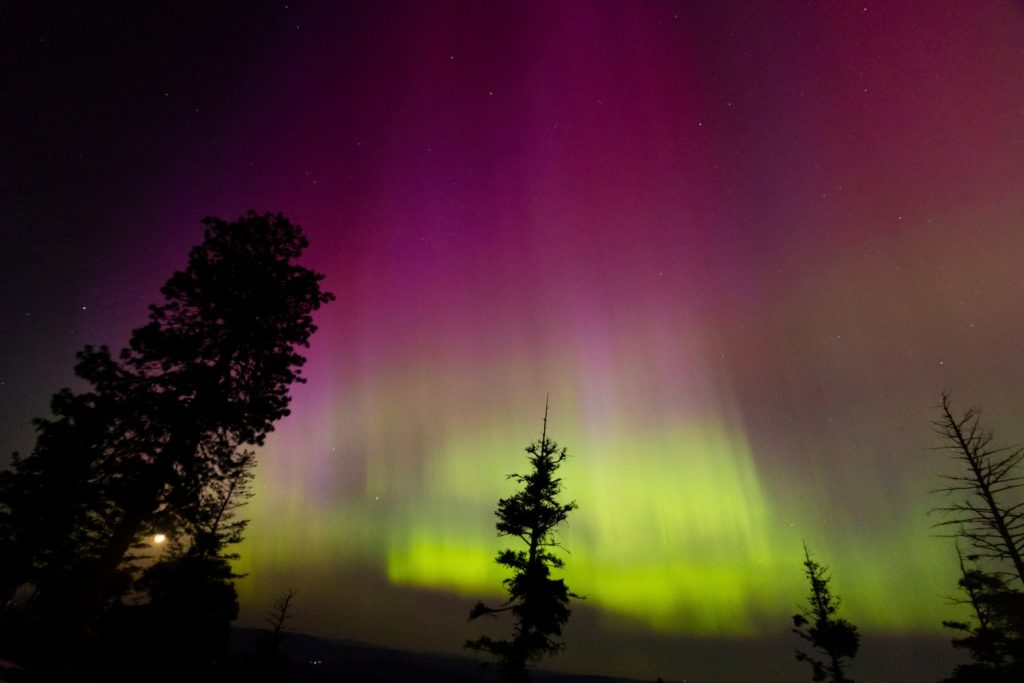summary
- The Northern Lights may be visible in some northern U.S. states this week.
- The phenomenon is expected to occur late Tuesday night into the early hours of Wednesday, and could occur again on Wednesday evening.
- The solar outburst that caused the aurora forecast was much weaker than the May outburst that powerfully stimulated auroras around the world.
The aurora may be visible in several northern states from New York to Idaho on Tuesday and Wednesday.
The National Oceanic and Atmospheric Administration’s Space Weather Prediction Center announced on Tuesday that a solar explosion called Coronal mass ejection observed on SundayAn ejection of solar material occurred toward the Earth.
These types of solar storms can shoot huge clouds of plasma and charged particles into space. When the energetic particles collide with Earth’s magnetic field, they interact with atoms and molecules in Earth’s upper atmosphere, creating the bright and colorful auroras in the night sky.
Material ejected from the sun is expected to reach Earth early Wednesday morning, meaning parts of the northern U.S., including Canada, Idaho, Montana, Minnesota, Michigan, New York and Maine, could see the aurora borealis from late Tuesday night into the pre-dawn hours of Wednesday.
The Northern Lights may also be visible on Wednesday evening. According to the Space Weather Prediction Center.
NOAA Aurora Dashboard It provides short-term forecasts of the aurora, including maps of where you can see the aurora.
Eruptions from the sun can cause geomagnetic storms that can interfere with satellites in space, and when plasma clouds and solar radiation hit Earth, they can disrupt power grids and lines, causing blackouts in extreme cases.
The Northern Lights, also known as the Aurora Borealis, are usually seen at higher latitudes, but strong solar storms can intensify the light show and make it visible farther south than usual.
During periods of high solar activity in recent months, skywatchers have been treated to a number of spectacular displays of the aurora borealis.
Sunday’s solar storm was much weaker than a series of eruptions in May that triggered severe geomagnetic storms on Earth. Supercharged yeahNorthern lLight It is available to viewers in many parts of the world, including viewers in the United States as far south as Alabama.
According to NOAA, solar activity goes from minimum to maximum in an 11-year cycle, with the current cycle expected to peak in July 2025.
Auroras usually appear as shimmering green curtains of light, but depending on the current composition and density of the planet’s atmosphere, the light can also take on shades of pink, purple, blue and red.


